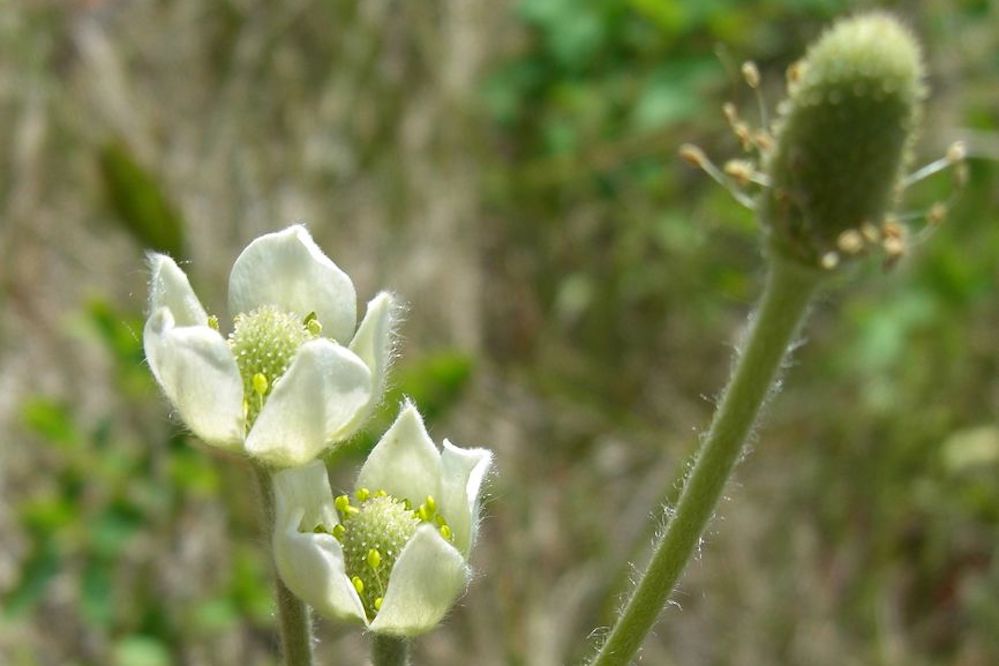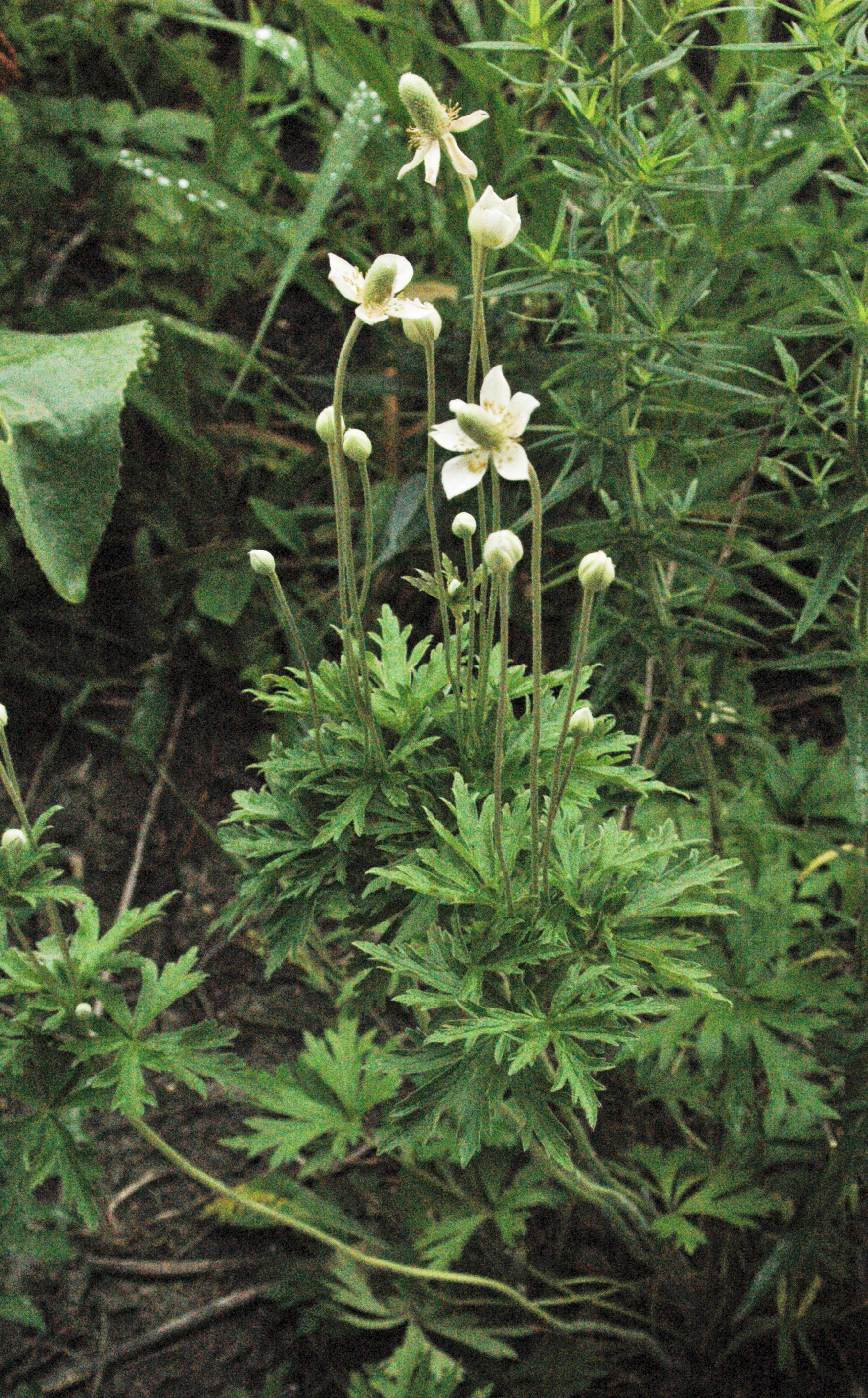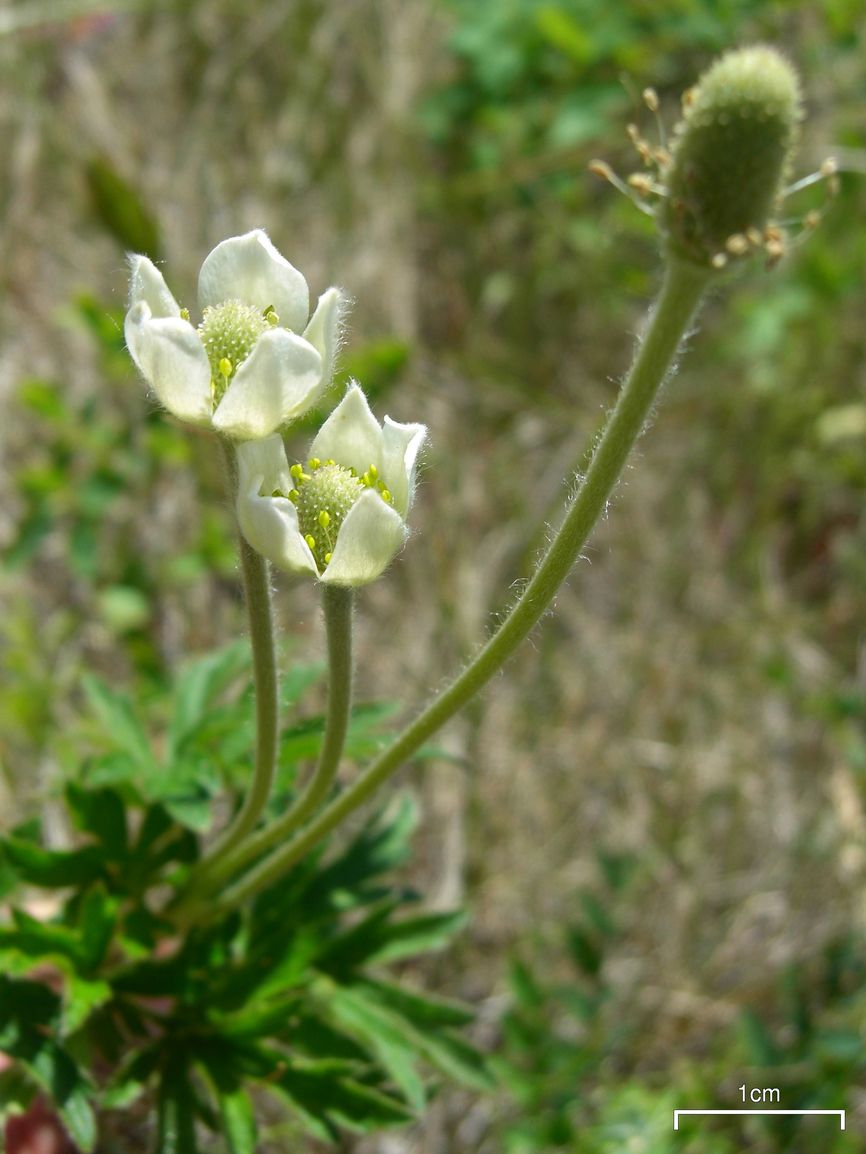Anemone cylindrica
Approx. 0.5 litre pot
About this cultivar:
Anemone cylindrica is an upright herbaceous perennial that features an attractive late spring (June-July) bloom of cup-shaped, greenish-white anemone flowers. After bloom, the center cone of each flower elongates into a cylindrical cone as the seed begins to develop. Mature cones contain tiny dark brown seeds attached to cottony tufts which facilitate distribution of the seed by the wind (anemone from Greek means wind). Species plants are easily distinguished by these long cylindrical seed cones which have given rise to a large number of common names including thimbleweed, long-fruited anemone, and candle flower. I presume also this cylindrical seed head have give the species its (greek) epithet 'cylindrica'.
This wildflower is native to prairies, dry open woods, slopes, limestone glades, pastures and roadsides throughout southern Canada. So it is tough!
- Position: Full sun, partial shade
- Soil: Almost any soil, likes dry
-
Flowers: June, July
- Other features: Woodland Plant
- Hardiness: H7 - Hardy in the severest European continental climates (< -20°C)
- Habit: Clump forming, mat forming
- Foliage: Deciduous
- Height: 30 - 60 cm (1 - 2 ft)
- Spread: 30 - 60 cm (1 - 2 ft)
- Time to full growth: 2 to 5 years
- Plant type: Herbaceous Perennial
- Colour: White, yellow, green
- Goes well with: Aster, Rudbeckia. Fuchsia, Hydrangea, and Geranium. Also great on its own.
About this genus:
Anemone is a herbaceous perennial genus that contains over 100 species that are native to temperate habitats all over the world. According to the Oxford English Dictionary, Anemone means "daughter of the wind" in ancient Greek– hence we sometimes call it 'Windflower'. The Metamorphoses of Ovid tells us that the plant was created by the goddess Venus when she sprinkled nectar on the blood of her dead lover Adonis. Dramatic...Depending on the species or cultivar Anemone can flower in different colours at different times of the year. Tuberous Anemone species generally flower in spring (eg: Anemone nemorosa), Mediterranean Anemone species flower in summer (eg: Anemone coronaria) and the larger, fibrous rooted Anemone species flower in autumn(eg: Anemone hupehensis). We stock quite a few of the species so read the description carefully!
Some Anemone species have their preferences regarding soil and location. However in our garden trials we have found cultivars that are not fussy and should happily grow in most garden locations; these are the ones we are selling here.
This sounds boring, but in general we prefer to plant most of our Anemone on their own in larger-than-average clumps. The most obvious exception are the Japanese forms, Anemone hupehensis (which are actually from Hupeh in China, not Japan). These grow a bit taller and can compliment daisy type flowers like Aster and Rudbeckia. Fuchsia, Hydrangea, and Geranium also work well with some Anemone.






